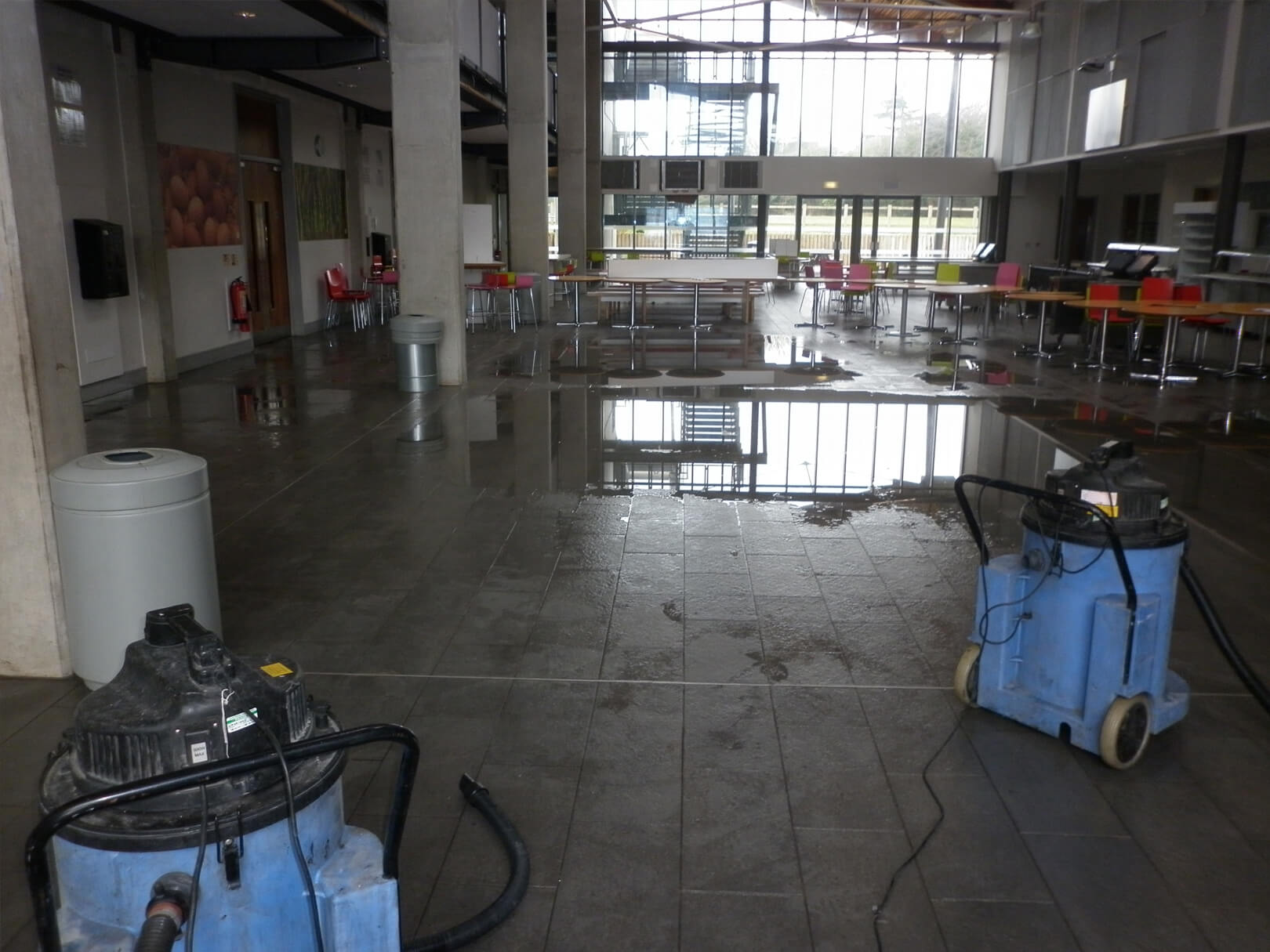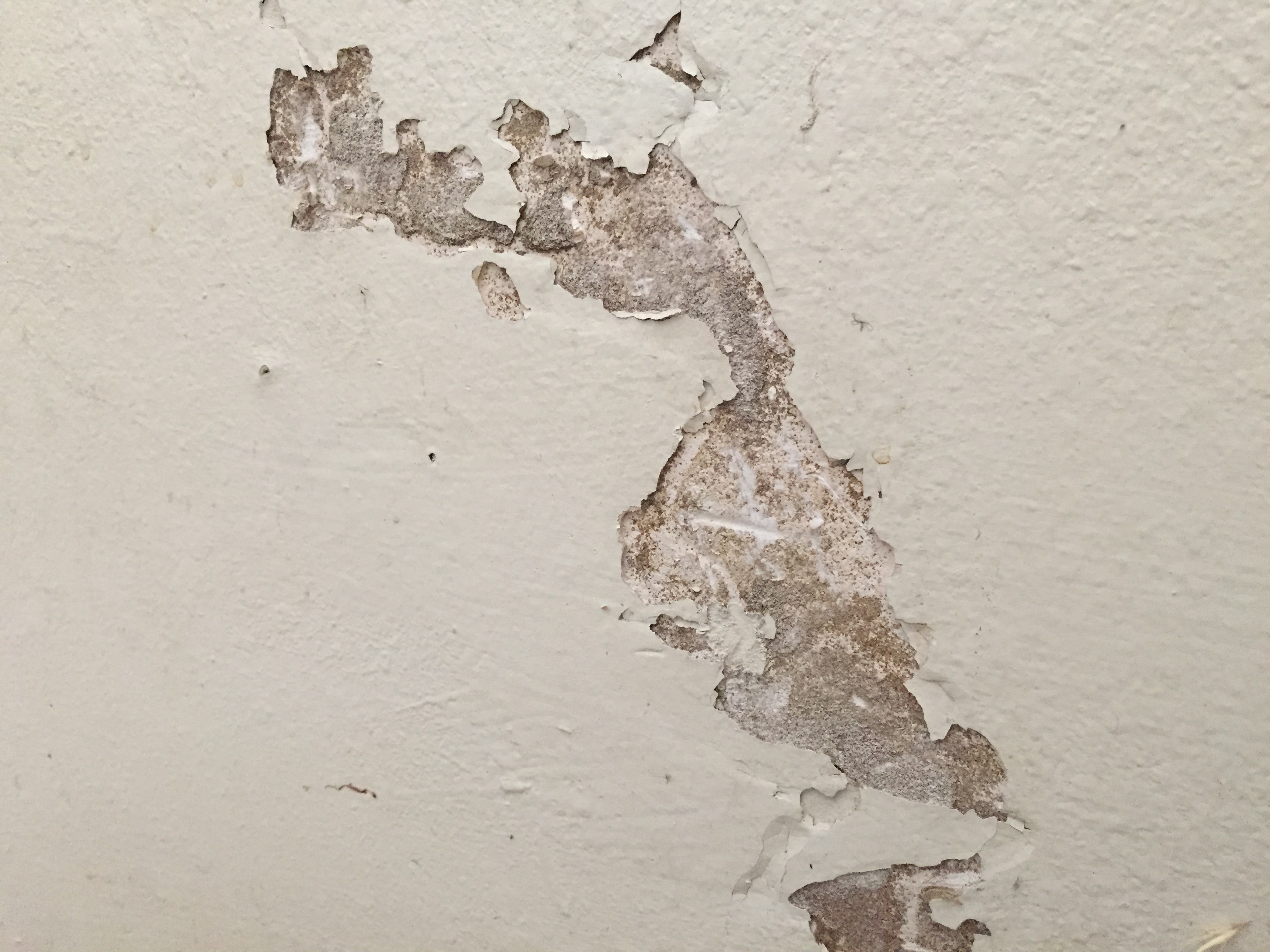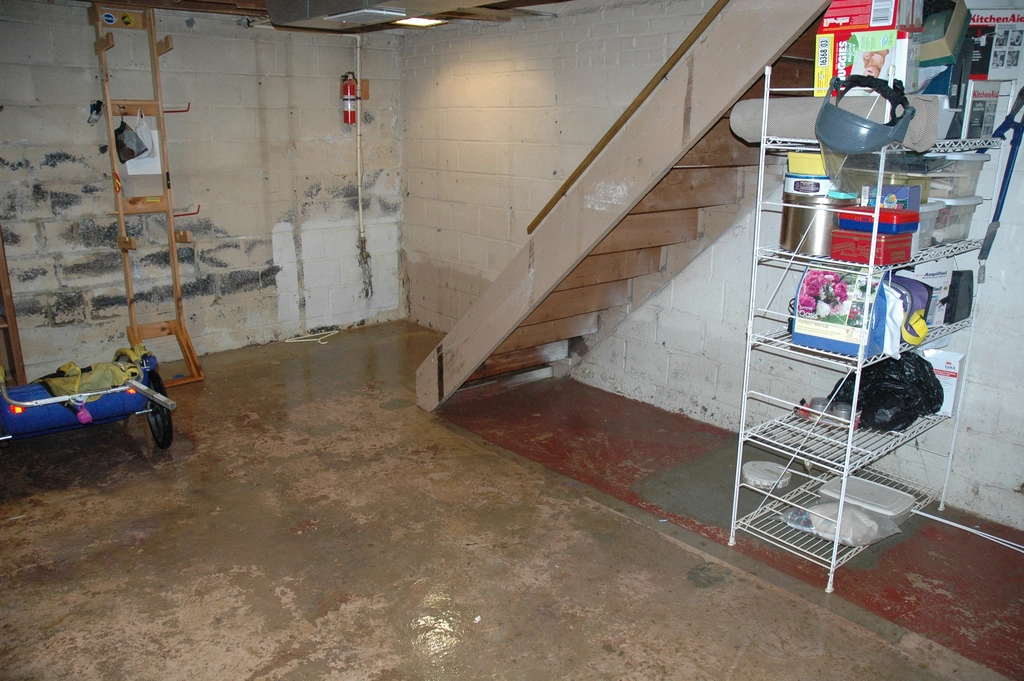Were you surprised to learn about the hidden dangers lurking under floodwater? Well, you might also be surprised to learn of the unseen damage that floods can cause, too.
The aftermath of a flood can be overwhelming. Every single surface that has been in contact with floodwater will need decontaminating and sanitising – from floors and ceilings to soft toys and furnishings.
Bacteria can start to grow in standing water within hours and floodwater can transport a wide range of different diseases. Therefore, it is critical that all surfaces that have been in contact with floodwater are thoroughly cleaned before it is safe to move back into your home.
Floodwater (blackwater) can contain human and animal excrement, chemicals, petrol and other toxins. It is extremely dangerous. Not only can it make you sick, but floodwater can also cause open wounds to become infected if it comes into contact with skin. These same bacterium will be deposited across every surface the floodwater has been in contact with so thorough decontamination and sanitation is essential.
But decontamination and sanitation is only half of it. Floods can be absolutely devastating to a house.
Mould
If your property isn’t thoroughly dry within 24 – 48 hours after being hit by a flood, then mould will start to grow, bringing with it its own health concerns.
Carpets, plaster, dry lining, and wallpaper among other organic materials are the perfect breeding ground for mould spores. And once mould spores have established, they need nowhere near as much moisture to continue colonising.
Damage to Electrics
You are well advised not to touch electrical appliances or your fuse box when returning home after a flood, especially if there is still standing water present. And nothing electrical should be touched until a qualified electrician tells you that it’s safe to do so.
Coastal flooding can have longer term effects on your electrical wiring than fresh water flooding, however. Because of the salt water present, electrical wiring can easily become corroded and compromised. It is advisable to have a qualified electrician conduct a thorough inspection of your electrics if you have experienced floodwater containing salt.
Carpets and Flooring

Flood-damaged carpet is incredibly difficult to clean. If it has been damp for over 24 hours, the likelihood of mould already growing in it is extremely high. It’s important that affected carpet is removed as soon you can to minimise the impact it has on the flooring underneath, particularly wooden floorboards which can begin to warp and rot.
If you have laminate flooring laid, you will probably notice that it starts to peel. Hardwood flooring, however, is likely to fare much better. Nevertheless, be prepared to remove sporadic boards in order to allow neighbouring boards the chance to swell and expand without warping. Any padding underneath the flooring is likely to need replacing.
Tiled flooring may get away without permanent damage. But you may still need to take up the floor, or part of, to allow the materials and base underneath to adequately dry. Bear in mind however, that the sealant or grout may have been affected and require replacing.
Be careful if you have natural stone flooring. While it may visually look unscathed, it can begin to show signs of damage months after the event. Efflorescence, warping, discolouration and erosion are just a few of the possibilities your natural stone flooring could be affected by.
Timber Framing and other Building Materials

Drywall and Plaster
Damaged drywall will be crumbly and soft with a good chance of mould growth already apparent on its surface. Susceptible to water damage, you will probably be faced with having to remove and replace all drywall that has come into contact with floodwater.
If you have plaster walls and ceilings, they are much more likely to escape permanent water damage. However, you will probably need to remove plasterboard to allow the affected walls and ceilings to dry thoroughly.
Insulation
The most common form of insulation found in homes is made from fibres or foam. Both of these hold water if they come into contact with it and are virtually impossible to dry out. Only specific foam that doesn’t absorb water will be safe to salvage following a flood, anything else will need throwing out. Remember to check any insulation between ceilings and in loft spaces too, depending on the severity and access route of the flood.
Timber Framing
Perhaps the biggest problem you’ll face with timber framing and woodwork around your home is the ability to dry it out in time to prevent mould growth. Although mould prefers other organic material to wood, it is still an issue that needs to be considered. Timber framing generally survives floodwater okay, but you should expect a bit of swelling and expansion.
Structural Damage Caused by Floodwater
Depending on the severity of the flood, your house can come under a lot of strain and pressure from floodwater.
It can push against the sides of your house, weakening its structure, particularly if it has an active current or waves. The continual movement of floodwater not only puts your house’s structure under constant strain, but it deposits sediment around the building, which only contributes to the pressure being suffered.
Interesting fact: Water flowing at 7mph has the equivalent force per unit area as air blowing at E-F5 tornado wind speeds – that’s over 200mph!
Floodwater can also disrupt the earth around your home’s foundations, potentially exposing them to the elements. The earth around your home will stay saturated for some time, increasing the pressure to the foundations from groundwater (this is referred to as “hydrostatic pressure“).
Watch out for the following signs after a flood, they could be indicative of foundation and structural damage:
- Doors and/or windows no longer open or close properly, including garage doors
- New cracks have appeared in walls, ceilings, door and/or window frames
- There are new cracks in the outside brickwork of your foundation
- You notice a slope to flooring which wasn’t there before
- You notice gaps between floors and walls, or between walls and ceilings
- You notice “twists” or rotations in walls which were not there before
If you notice any of the above, you should consult with a structural engineer and inform them that your home has recently been flooded.
Final Thoughts
Never underestimate how dangerous floods are and just how much damage they can do, even if the resulting damage doesn’t appear to be too bad on the surface.
You cannot see bacteria and pathogens that make you sick. And without adequate personal protective equipment and following adequate health and safety precautions, you are putting your health at risk if you attempt to clean up floodwater yourself.
Flood Damage Clean Up
Flood damage cleanup and flood water extraction is always best handled by qualified and experienced flood restoration company who not only have the knowledge and expertise to deal with such situations, but who also have access to the equipment needed to fully dry, clean and sanitised your home.
Flood Restoration
There may possibly be more building materials than you perhaps realise that will need replacing after a flood. And failure to replace affected materials could lead to future problems with mould growth, rot, disintegration and compromisation of structural integrity.



